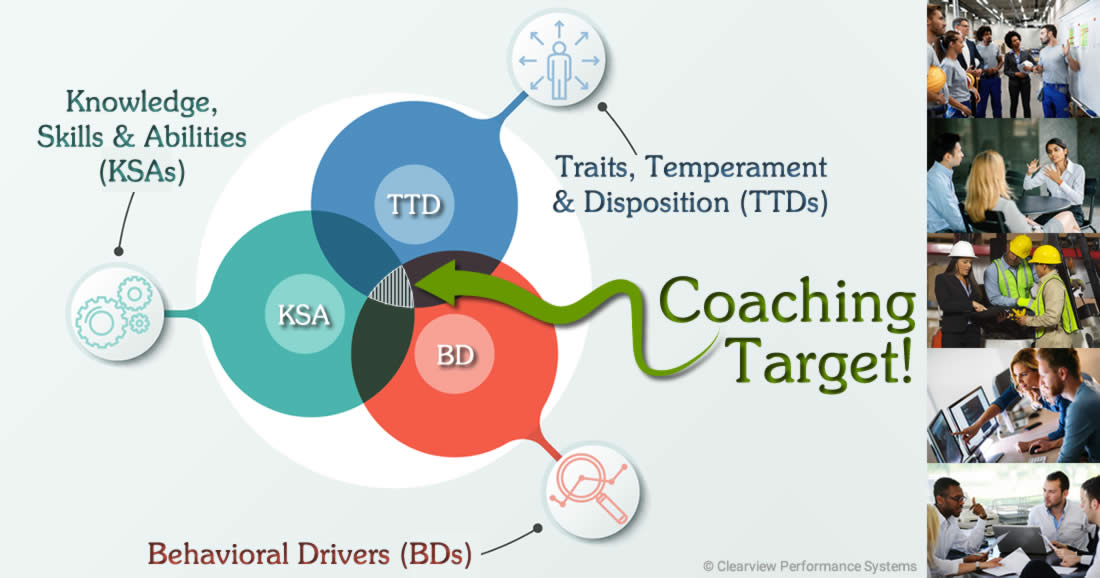Clearview® Performance Systems brings you ...  ® ... a Culture of Results & Engagement®
® ... a Culture of Results & Engagement®
Clearview® Performance Systems brings you ...  ® ... a Culture of Results & Engagement®
® ... a Culture of Results & Engagement®
Here's the next in our series of weekly managerial TIPS (Techniques, Insights, and Practical Solutions)
to help you better engage your team in the activities that lead to higher performance.
CORE Bites Issue #101
(November 17, 2020)

Have you ever given any thought to where your coaching philosophy came from? Why you coach the way you do?
I'm almost embarrassed to say that when I started coaching I hadn't really thought through the critical need to clarify why I was coaching—or how I was coaching. I just started coaching basically the way I had been coached up to that point—for better or, in my case, for worse. Needless to say, I struggled for a number of years before realizing that 100% of my coaching addressed only 33.33% of the need. My simple philosophy—at the time—was if I increased an employee's skills I would see a commensurate increase in that employee's performance. My 'coaching' was comprised of show-n-tell ... show-n-tell ... show-n-tell.
The outcome? A lot of time invested ... with only marginal increases in performance.
This disclosure brings me to this week's topic and, while it may be a single word, there are dozens of interpretations—mostly inaccurate, misleading, and destined to bring you to the same place I found myself years ago ... lots of time invested with only marginal increases in performance.
The word I'm referring to is "competency."
There's a lot of talk about competencies in today's contemporary workplace. While well-intentioned, much of what I'm observing misses—by a country mile—what I refer to as the "Coaching Target." I say this because it seems that any initiative to improve competencies is directly connected to increasing employee knowledge, skills, and abilities (commonly referred to as KSAs). But this is only 1/3 of the equation!
Here is where I think we've had it wrong. Competencies are ALWAYS defined as behaviors; they are NOT defined as skills. And, yet, much of what I see taking place in organizations seems to imply that the words "competency" and "skill" are interchangeable.
So, if competencies are always defined as behaviors, the question we should ask ourselves—as coaches—is what elements must be present to 'cause' the behavior described within the competency definition to occur? Behaviors don't happen in isolation; they also don't occur just because the job description says so or because the boss says so. And this focus is absolutely critical because behaviors are the only tangible component we can meaningfully measure; that we can provide feedback on; and that we can visibly develop.
If we want to unlock employee potential and maximize performance we need to better understand how to create the stimulus for the behavior to occur. This might seem complicated at first but I hope to make this relatively easy using the Venn diagram shown in the graphic depicted at the top of this page.
This week's HVAs will focus on the Coaching Target (what many golfers refer to as the "sweet spot") that occurs at the exact intersection of the three overlapping circles; the area where the employee's knowledge, skills, and abilities (KSAs) and the employee's traits, temperament, and disposition (TTDs) and the employee's behavioral drivers (BDs) all overlap ... and make the MAGIC!
This week (starting today), enhance your coaching capability by intentionally including all three (3) of the antecedents to a behavior:
I'd love to hear how these HVAs work for you!
Neil Dempster, PhD, MBA
RESULTant™ and Behavioral Engineer
"Don’t lower your expectations to meet your performance. Raise your level of performance to meet your expectations."
— Ralph Marston —
